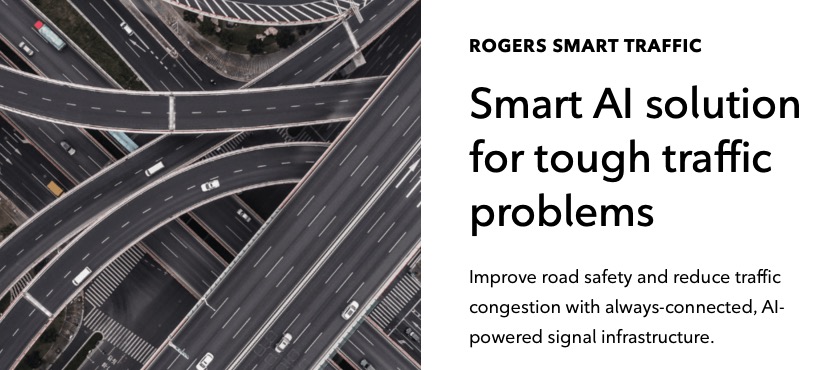
Rogers 5G Cameras to Monitor Traffic at Toronto Intersections
The City of Toronto has approved a partnership with Rogers to deploy cameras and sensors at five key downtown intersections to monitor and analyze traffic flow, in an attempt to get rid of gridlock.
According to Rogers, the 5G artificial intelligence system will record real-time data on vehicle, pedestrian, and cyclist movements as part of the city’s strategy to reduce gridlock, approved by council last fall.
On Thursday, city councillors approved these “transportation innovation projects” to use “both pre-commercial and early-market technologies.”
The pilot program will see cameras installed to monitor University Avenue at Adelaide, King, Wellington and Front streets as well as York Street and Bremner Boulevard, reports CityNews.
After a months-long phase of data collection, AI software will offer suggestions on improvements to lower congestion at intersections. Eventually, real-time traffic management would include AI managing traffic lights to lower congestion.
“I think we’ve all kind of had that experience where you’re sitting at a traffic light and there’s no cars coming in the other direction,” said Neel Dayal, head of innovation and partnerships for Rogers.
“The idea here is that situation really shouldn’t occur. By having a good bird’s eye view of what’s happening in the intersection, you can dynamically change the lights to ensure that there’s no cars sitting, idling, or pedestrians or cyclists in that matter.”
This is Rogers’ first deployment of its technology in a major urban setting, following a successful two-week trial at the University of British Columbia’s Vancouver campus in 2022. Rogers says the UBC pilot lowered car delays by 182 hours and pedestrian delays by 93 hours, while also saving 2.8 tonnes of carbon emissions.
“Rogers Smart Traffic is an AI-powered traffic signal solution that connects road users to the city grid. It digitizes urban intersections to help municipal agencies improve the safety of road users while increasing the efficient flow of traffic,” explains the Rogers website.
“Using data from multiple sources, including cameras and radar, coupled with AI-based detection and analytics, the platform removes the need to re-time signals to manage traffic variability, while future-proofing cities for the connected and autonomous era,” details Rogers.
The Toronto pilot aims to build on these results, with Dayal noting the differences expected due to the higher traffic volumes in the city’s downtown area.


